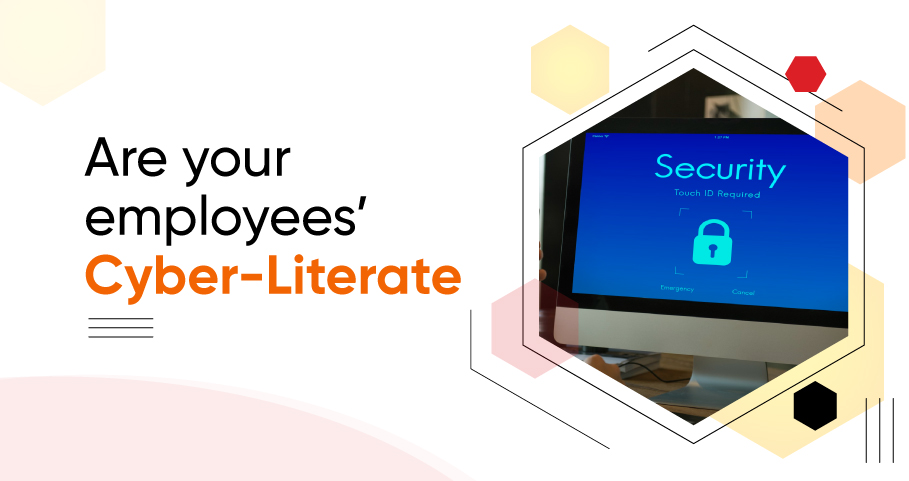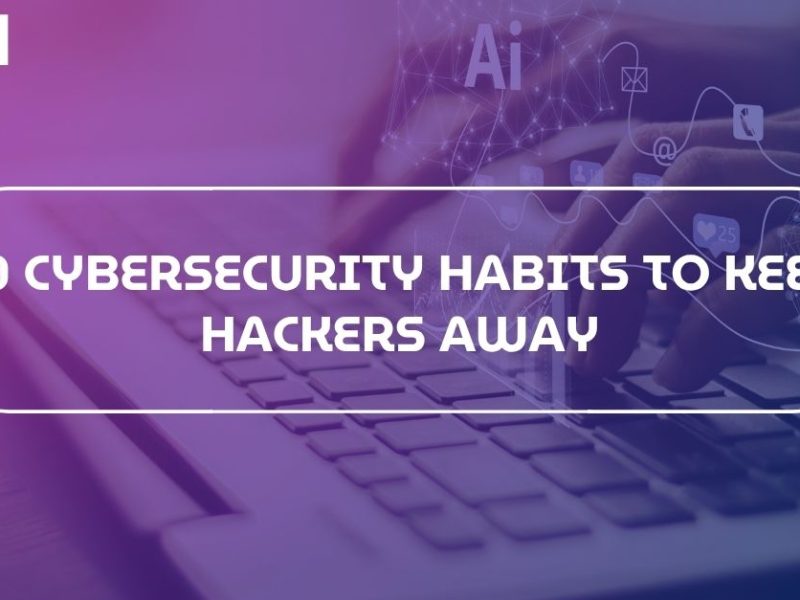
Why is cybersecurity awareness training important for your organization?
According to a TOI report published on August 15, cyber fraud complaints in Delhi have surged by 200%, thus far in 2023 compared to the same time in the previous year.
Technology has undoubtedly brought advantages. It has also introduced a wide range of cybersecurity vulnerabilities that can seriously jeopardize businesses. The frequency of cyberattacks, data breaches, and other malicious activities is increasing rapidly. Their potential impact on your business cannot be underestimated.
People were cheated of Rs.168.5 crore in 2023 so far compared with Rs.42.6 crore during the same period the previous year, police data revealed.
In today’s society, the growing prevalence of cyber threats has heightened the significance of safeguarding an organization’s information. Protecting data goes beyond acquiring cutting-edge technology and software; it also involves ensuring that employees possess the knowledge and awareness regarding potential risks associated with cyber threats. Training employees on security awareness plays a role in preparing them for dangers making it a crucial investment for any organization. Let’s delve into the significance of security awareness training within the information security realm explore the consequences, and importance of training, and highlight the advantages of investing in this area.
Advantages of Security Awareness Training
There are several advantages to receiving security awareness training. Organizations may lower the risk of security breaches, strengthen their overall security posture, and improve their image by investing in staff education. It also contributes to a rise in employee satisfaction and morale by arming them with the information necessary to safeguard the company and themselves from future cyberattacks. Employee awareness of possible security dangers and how to address them is enhanced by this training, which can enhance an organization’s total security.
The Effects of Negligence
Information security negligence can have serious repercussions for a company. Cyberattacks can cause a company to suffer long-term consequences, including money loss, legal liabilities, and reputational harm. Negligence may also lead to the loss of critical data, including trade secrets or consumer information, which may result in fines from the law and other authorities. Consequently, it is essential to spend money on security awareness training to make sure that staff members are prepared to stop these threats.
Understanding the Cybersecurity Threat
Before delving into the importance of cybersecurity awareness training and how Protegent Total Security can assist, it’s crucial to comprehend the nature of the cyber threats that businesses face.
- Phishing Attacks: Phishing remains one of the most common cyber threats. Cybercriminals use deceptive emails, messages, or websites to trick employees into revealing sensitive information, such as login credentials or financial data.
- Ransomware: Ransomware attacks are on the rise, locking organizations out of their systems until a ransom is paid. Such attacks can lead to data loss, financial loss, and damage to your company’s reputation.
- Insider Threats: Not all threats come from external sources. Insider threats can be equally damaging. Employees or contractors with access to your systems may unintentionally or intentionally compromise your data.
- Data Theft: Your business stores a vast amount of valuable data. If this data falls into the wrong hands, it can be sold on the dark web or used to commit various types of fraud.
- Operational Disruptions: Cyberattacks can disrupt your business operations, leading to downtime, loss of productivity, and financial consequences.
The Value of Training in Security Awareness
Employees’ ability to identify and react to security risks is one of the main advantages of receiving security awareness training. Cybersecurity threats can come in many different forms, such as ransomware, malware, and phishing schemes. Employees of a company are frequently its first line of defense against these risks, thus they must have the information and abilities needed to recognize and stop them.
- Educating Your Workforce: Employees are your first line of defense against cyber threats. They need to be aware of various threats and understand how to recognize and respond to them. Cybersecurity awareness training helps in achieving this goal.
- Minimizing Human Errors: Many cybersecurity incidents occur due to human errors, such as clicking on malicious links or opening infected attachments. Training can reduce these errors by teaching employees how to use technology safely.
- Building a Security Culture: A security-aware culture within your organization fosters a sense of responsibility among your employees. When they understand the importance of cybersecurity, they are more likely to follow best practices.
- Protecting Customer Data: Your customers trust you with their data. Cybersecurity training ensures that your employees take the necessary precautions to safeguard this data, reducing the risk of data breaches.
- Compliance Requirements: Many industries have legal and regulatory requirements for data protection and cybersecurity training. Meeting these requirements is essential for avoiding legal consequences.
How to put security awareness into practice!
Any organization that values the protection of its information assets should invest in cybersecurity awareness training. The following actions may be made to put in place an efficient training program:
- Perform a Security Assessment: In order to identify areas of vulnerability and dangers, it is crucial to undertake a complete security assessment prior to conducting cybersecurity awareness training. This can assist in deciding the training’s scope and the subjects to cover.
- Establish Training Objectives: It’s critical to establish precise training objectives after identifying risk and exposure areas. This will make it easier to make sure that the training meets the unique demands and objectives of the company.
- Provide Training Materials: It’s critical to provide training materials that are interesting, educational, and easily accessible. Videos, online classes, interactive meetings, and practical training activities can all fall under this category. The training materials have to be created with the employees’ unique learning requirements in mind.
- Assign Responsibility: Assign the task of supervising the creation, implementation, and oversight of the cybersecurity awareness training program to a team or to a cybersecurity specialist. The individual or group in charge of the program should be in charge of keeping track of advancement and giving staff members regular feedback.
- Establish a Baseline: Determine the employees’ level of security awareness and understanding. This can be achieved by evaluating workers’ baseline cybersecurity knowledge through the administration of a pre-training evaluation.
- Offer continual Training: In order to keep staff members informed about the latest developments in cybersecurity risks, it’s critical to offer continual training. Reminders, newsletters, and frequent training sessions are a few examples of this.
- Test Workers: Perform routine evaluations to gauge staff members’ comprehension of cybersecurity risks. Making sure staff members are capable of identifying and reacting to such threats, can be accomplished through simulated phishing campaigns or other exercises.
- Promote Reporting: Motivate staff to report any incidents or suspicious activities they see. By doing so, the organization’s entire security posture may be strengthened and possible security breaches can be identified.
Protegent Total Security: Your Cybersecurity Ally
Protegent Total Security is a robust and reliable cybersecurity solution that can help your business stay protected. Here’s how:
Real-time Threat Detection: Protegent Total Security offers real-time threat detection, ensuring that your systems are constantly monitored for potential threats.
Data Encryption: The software provides data encryption capabilities, keeping your sensitive information safe from prying eyes.
Web Filtering: Total Security includes web filtering features to block access to malicious websites and protect your employees from phishing attempts.
Email Protection: Phishing attacks often target employees via email. This software helps filter out malicious emails and keeps your inbox secure.
Firewall: The firewall component of Total Security acts as a barrier against cyber threats, preventing unauthorized access and safeguarding your data.
Regular Updates: The software is updated regularly to stay ahead of emerging threats, ensuring your business is protected against the latest cyber risks.
In conclusion, the cybersecurity landscape is evolving rapidly, and it’s essential for your business to be proactive in defending against cyber threats and use antivirus protection for complete security. Organizations must have security awareness training if they want to defend against cyberattacks. They may dramatically lower their risk of a security breach by providing staff with training on potential security risks and how to respond to them. Information security negligence can have serious repercussions, such as monetary loss and harm to one’s image. One of the most significant expenditures a company can make is in staff education. Employees must get frequent, thorough training in order to guarantee that they possess the information and abilities needed to protect the company and themselves.
Cybersecurity awareness training combined with the right security solution, such as Protegent Total Security, can significantly reduce the risk of a cyber incident and protect your business, your data, and your reputation. Don’t wait until it’s too late; invest in cybersecurity awareness and robust protection now to keep your business safe in the digital age.




